During our recent visit to Indiana we finally got a chance to visit the Goose Pond Fish and Wildlife Area in Central Western Indiana. This is a natural wetland with several ponds. It has hiking trails for observing wildlife. It is a great stopover site for migrating birds, such as Sandhill Cranes and White Pelicans. We were there in April, which is past the prime time for observation. For example, earlier in the year, about 20,000 Sandhill Cranes (Antigone canadensis) were present.
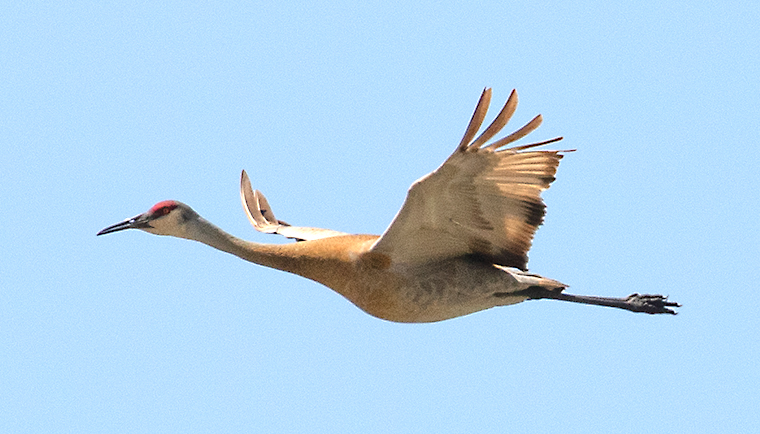
At first we did not see a single Sandhill Crime. But soon we heard a single crane calling from a brushy area behind us. After a bit, it took wing and flew past us.
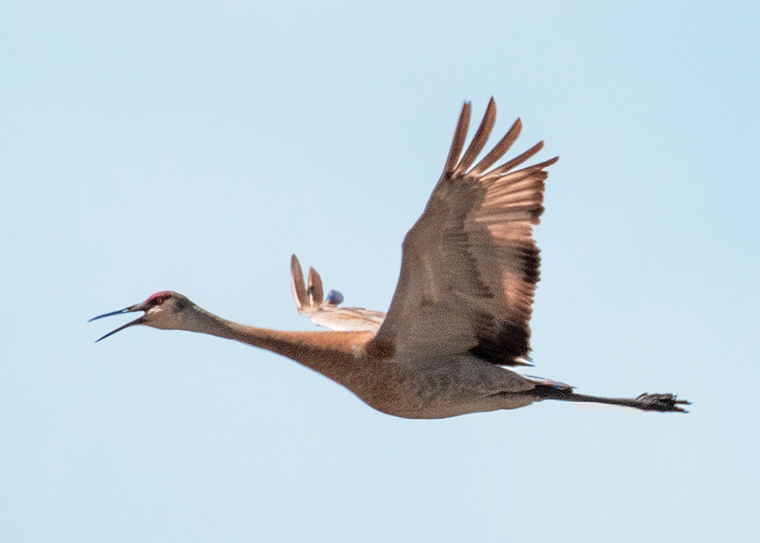
It was still calling loudly as it flew past.

Quite a few White Pelicans (Pelecanus erythrorhynchos) were still around, however.
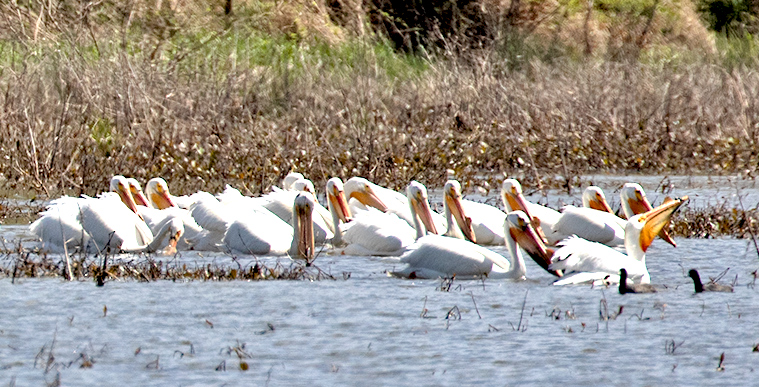
They were idly dipping their beaks in the water, not actively hunting.
They make interesting figures and patterns while they are in flight as the next few photographs show. White bodies and black wingtips make quite a contrast.
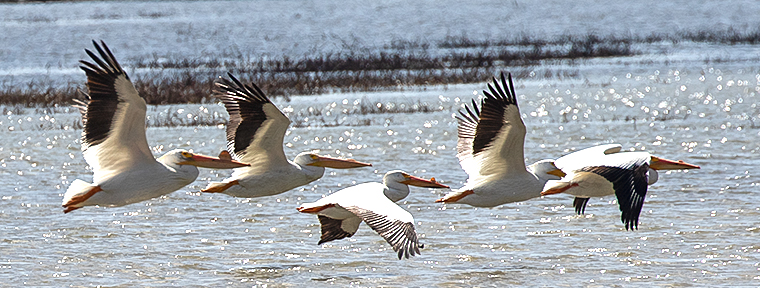
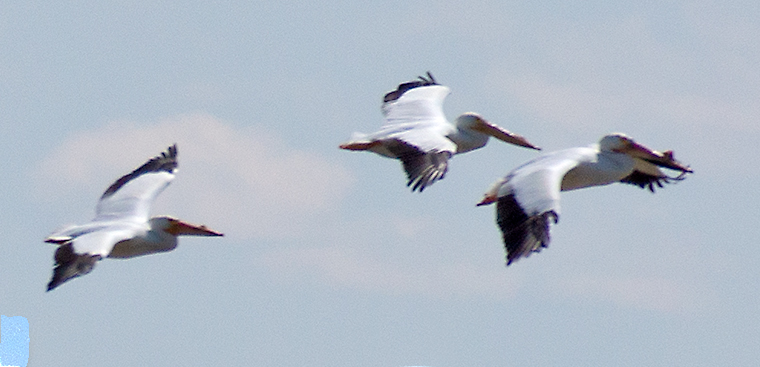
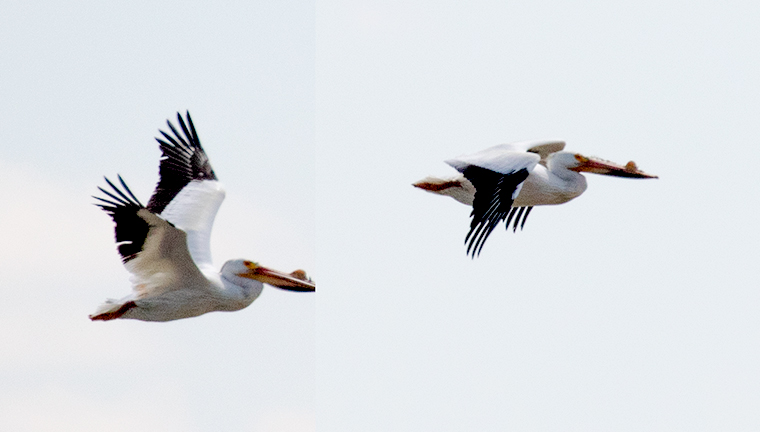
White Pelican’s wingspan is second only to the California Condor (Gymnogyps californianus) among North American Birds.
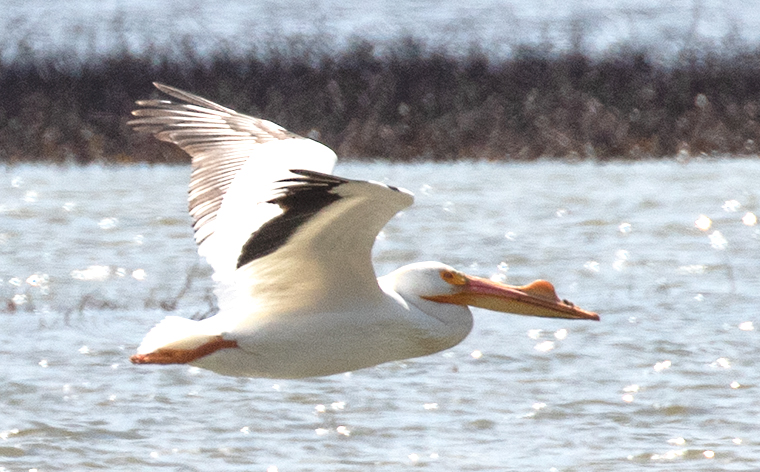
The photograph immediately above shows the curious growth on the upper mandible of this bird. The fibrous plate is shed after eggs are laid. This is the only one of the eight species of pelicans that has such a growth (sometimes called a “bill horn”). Both sexes have this “bill horn”, and the sexes are virtually identical, with the males slightly larger size as the only distinguishing character.
Discover more from A Naturalist's Journal
Subscribe to get the latest posts to your email.

Somehow the state of Indiana did not figure in my consciousness when I thought of cranes, a situation now remedied.
My friends and relatives in Indiana see lots of Sandhill Cranes flying over during the Spring and Fall Migration. So they are just passing through Indiana. Their numbers have increased a lot in recent years. When I was growing up in Indiana, we never saw any.
Incidentally, there is a small resident (non-migrating) population of Sandhill Cranes in the Okefenokee Swamp.
Thanks Gary, very beautiful photography